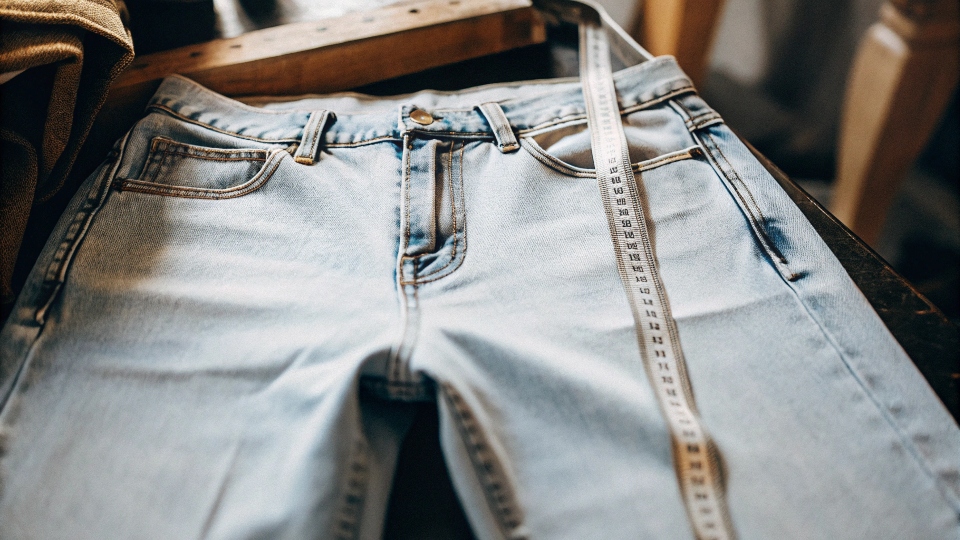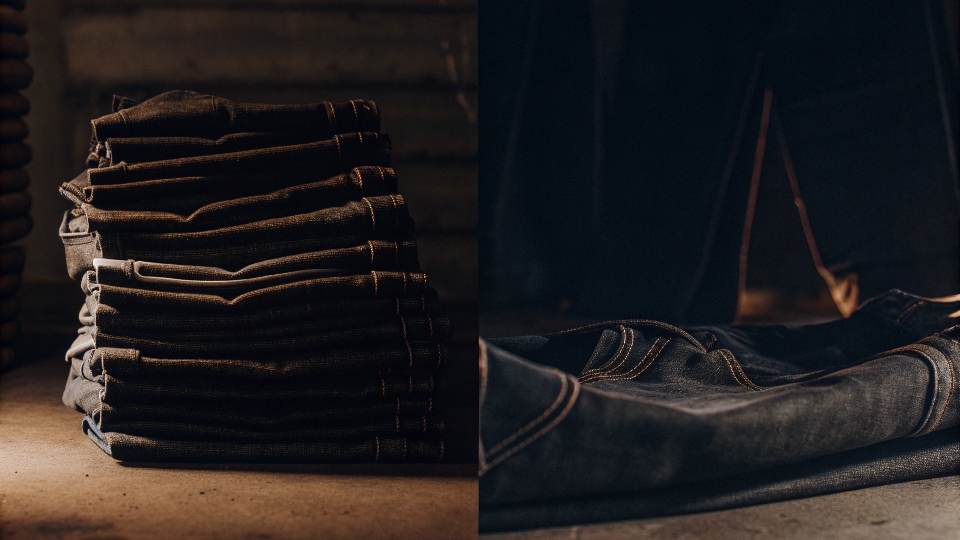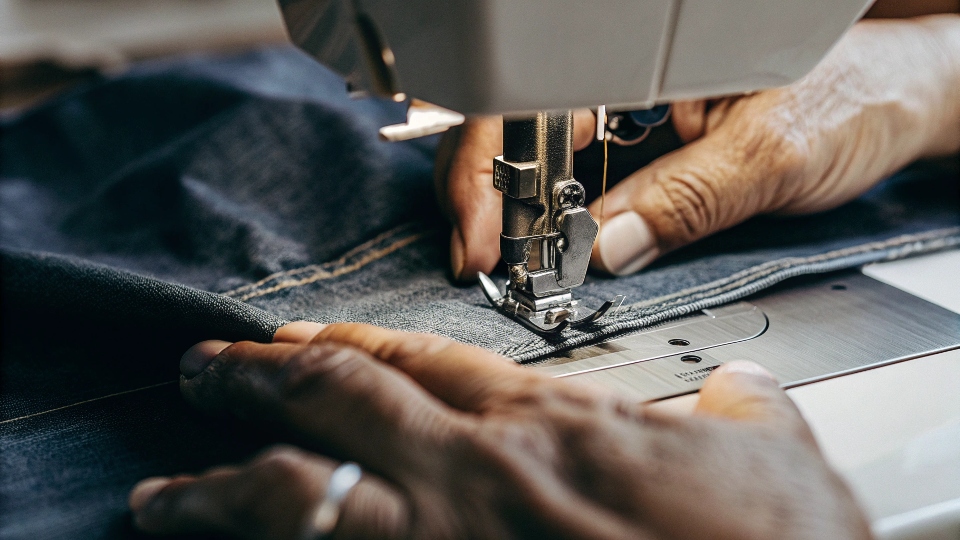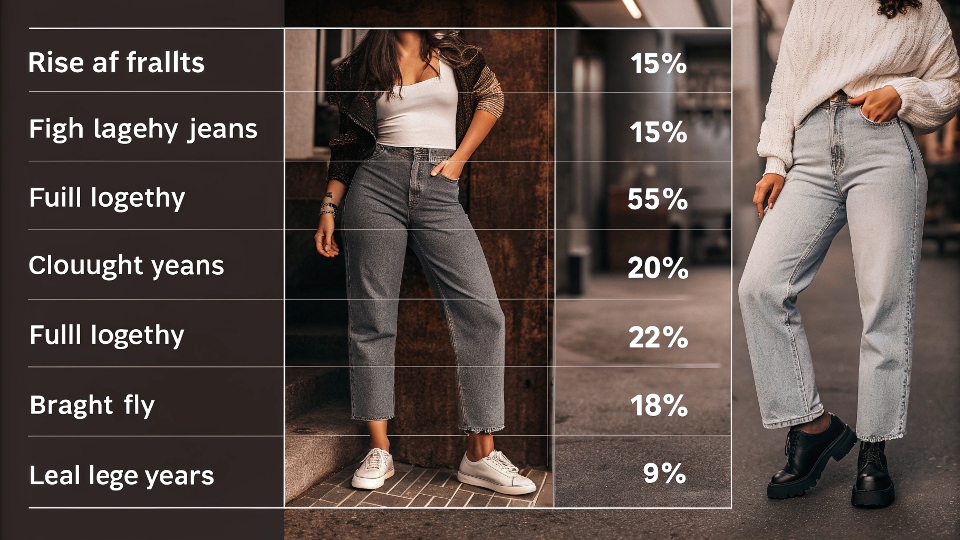You find a great pair of jeans, but the legs are so long they bunch up around your ankles. You wonder why brands make them this way, forcing you to get them tailored or live with it.
Branded jeans are intentionally made long to fit the widest possible range of customers. It's easier and cheaper for a customer to shorten a pair of jeans that are too long than it is to lengthen a pair that are too short.
In my factory, we work with brands from all over the world, and inseam length is a constant topic of discussion. A designer like Dean in New York might specify a standard 34-inch inseam1 for a men's straight-fit jean. This isn't because he thinks every man has 34-inch legs. It's a strategic business decision based on logistics, cost, and maximizing potential sales. Let's break down the reasons behind this common practice.
Why are jeans inseams so long?
You consistently find that standard inseams, often 32 or 34 inches, are much longer than your actual leg length. This makes shopping frustrating, as almost every pair you buy needs an extra step before you can wear it.
Jeans inseams are long to accommodate taller customers and reduce inventory complexity for brands2. By producing a single, longer inseam length per waist size, brands can serve more people without having to double or triple their stock.
From a manufacturing standpoint, this is all about efficiency and managing what we call SKUs, or Stock Keeping Units.
Imagine a brand wants to sell a jean in 10 different waist sizes, from 28 to 38. If they offer three different inseam lengths (say, 30, 32, 34) for each waist size, they suddenly have to produce, store, and track 30 different SKUs instead of just 10. This triples the complexity and financial risk.
The Logic of One-Length-Fits-Most
For most brands, the math is simple. Taller customers have very few options if a jean is too short. There's no extra fabric to let out. However, a customer of average or shorter height can easily have a long pair of jeans hemmed for a small fee.
This makes the jean accessible to them. By producing a single longer inseam, say 34 inches, the brand can sell that one pair of jeans to a tall person, an average person, and a short person.
Two of them might need tailoring, but all three can make a purchase. It's a business decision that prioritizes capturing the maximum number of sales over providing a perfect out-of-the-box fit for everyone.
Are jeans supposed to be too long?
You see a style where the jeans are stacked and bunched at the ankle, and you wonder if that's how you're meant to wear them. You're unsure if the extra length is a flaw or a feature of the design.
Whether jeans are "supposed to be" too long depends on the intended style. For certain looks like "stacking," the extra length is a deliberate fashion choice3. For classic fits, the length is a practical decision by the brand.
When a client sends me a tech pack for a new design, the inseam measurement is directly tied to the overall vision for the jean. The intended fit completely dictates the "correct" length. It's not a one-size-fits-all rule; it's about understanding the specific style you're buying.
Intended Style vs. Practical Sizing
There are two main reasons for extra length, and they are very different.
-
Fashion and "Stacking": For trend-focused styles, especially in slim or skinny fits, extra length is added on purpose. This causes the fabric to bunch up and create a "stack" just above the shoe. This has been a popular look in streetwear for years. In this case, the jeans are supposed to be too long. We deliberately cut these with inseams of 34 or even 36 inches, regardless of the waist size, to achieve this effect.
-
Practicality and "Breaking": For classic straight-leg or bootcut jeans, the goal is different. Here, the extra length is for practicality. The ideal length for a classic jean has a slight "break," which is a single fold or crease where the front of the jean rests on the top of your shoe. Brands provide extra length to ensure even taller individuals can achieve this look, and expect others to hem them to their perfect break point.
How to stop jeans from being too long?
You've invested in a great pair of jeans, but the length is just wrong. You're tired of walking on the back of your hems or having them look sloppy, and you need a permanent solution.
The best way to stop jeans from being too long is to have them professionally hemmed by a tailor. For a perfect result, ask the tailor to use the original hem to preserve the factory-made look at the leg opening.
Every day in my factory, we finish the hems on thousands of pairs of jeans. We use special heavy-duty chain-stitching machines that create a unique roping effect as the jeans wash and age.
This distinctive finish is a sign of quality that you don't want to lose. Just cutting and folding the hem on a regular sewing machine will never look the same.
Your Options for the Perfect Length
You have a few great options to fix a pair of jeans that are too long.
- The Original Hem4: This is the best method. A good tailor will carefully cut off the original hem, shorten the jean leg to your desired length, and then flawlessly reattach the original hem. This costs a little more, but it's worth it to keep your jeans looking authentic.
- A Simple Cuff5: This is the easiest and most versatile solution. You can simply roll the jeans up. A small, neat cuff looks great with straight-leg jeans, while a larger, messier cuff can work well with more relaxed fits. This allows you to adjust the length based on the shoes you're wearing.
- The Raw Hem: This is a modern, slightly edgy option. You can simply take a sharp pair of scissors and cut the jeans to your desired length. After a wash, the edge will fray slightly, creating a cool, deconstructed look. This works best with casual, non-stretch denim.
Are jeans getting longer?
It seems like every new style of jeans you see in stores has a longer, baggier leg. You're used to the cropped or ankle-length jeans of the skinny era and wonder if this a permanent new trend.
Yes, on average, jeans are getting longer. This is a direct result of fashion trends shifting away from tight, cropped styles towards looser, 90s-inspired silhouettes like baggy, straight-leg, and puddle jeans, which are designed to be worn long.
I see this change directly in the production orders we receive. Five years ago, a huge portion of our production for women's jeans included inseams of 27 or 28 inches for a cropped look.
Now, the most common inseam we're asked to produce for those same waist sizes is 31 or 32 inches. Menswear has seen a similar, though less dramatic, shift away from ankle-baring slim fits to full-length straight-leg cuts.
This is all part of a larger fashion cycle. For about ten years, the skinny jean dominated. Its silhouette was defined by a tight fit and often a shorter, cropped length to show off ankles and footwear.
The new trend cycle we are in is a reaction against that. It favors volume, comfort, and a relaxed attitude. The longer length is essential to achieving that look.
The goal is no longer to show off your ankles, but to have the jeans "puddle" or stack slightly over your shoes. As long as these looser fits remain popular, the longer inseams will be the standard.
Conclusion
Jeans are made long to serve the most customers, not as a design flaw. Understanding your hemming options is the key to turning a universally sized product into your own perfect-fitting pair.
-
Learn about the industry standards for inseam lengths and how they affect fit and style. ↩
-
Discover how brands manage inventory complexity and its impact on consumer choices. ↩
-
Explore how extra length in jeans can be a stylish decision rather than a flaw. ↩
-
Explore the Original Hem technique and why it's the best option for altering jeans. ↩
-
Discover how a simple cuff can be a stylish and practical solution for long jeans. ↩










